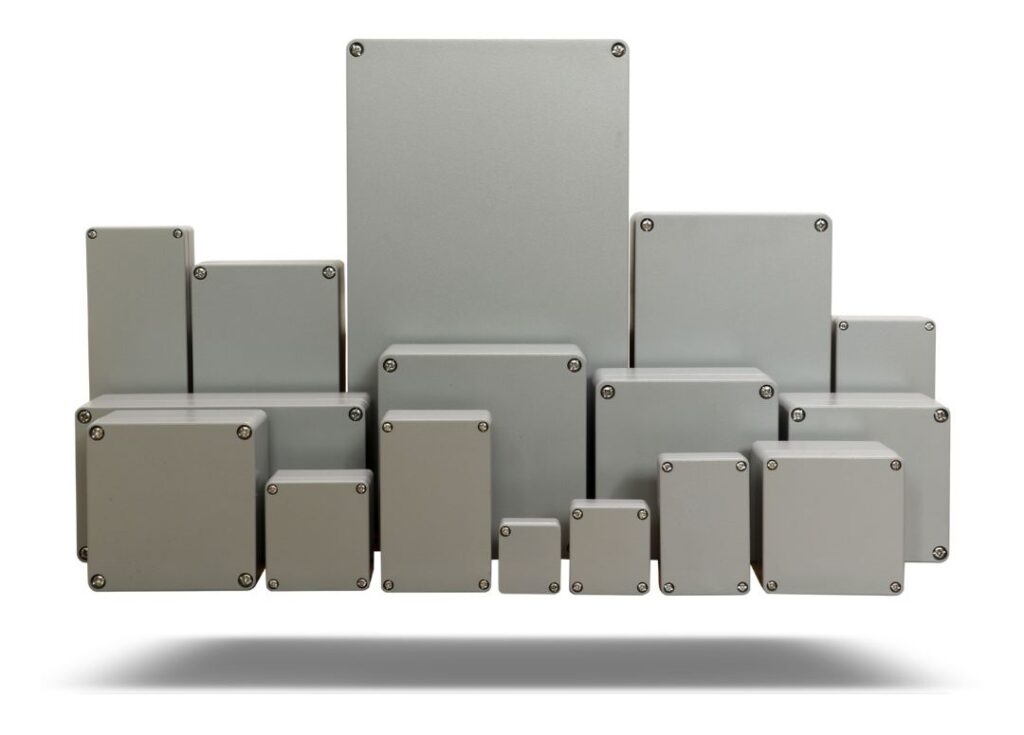Crafting Excellence: A Deep Dive into the Manufacturing Process of BBOX Aluminium Die Cast Enclosures

Aluminum die cast enclosures have become a cornerstone in the world of manufacturing, offering a perfect blend of strength, precision, and efficiency. Understanding the intricacies of the manufacturing process sheds light on why BBOX Enclosures are the go-to choice for numerous industries. In this blog post, we will take you on a journey through the key steps involved in the manufacturing process of premium aluminium die cast enclosures by BBOX.
1. Die Design and Fabrication:
Our process begins with the meticulous design and fabrication of the die, the mould used for shaping the aluminium. The die must be crafted with precision to ensure the final product meets the exact specifications. Computer-Aided Design (CAD) is often employed to create detailed die designs, taking into account the specific requirements of the enclosure by our clients.
2. Melting and Injection:
Once the die is prepared, the next step involves melting the aluminium. Aluminium ingots or recycled aluminium are commonly used as the raw material. The molten aluminium is then injected into the die under high pressure. This injection process is crucial for achieving the desired shape and intricacies of the enclosure. The pressure applied during injection ensures that the aluminium fills every nook and cranny of the die, resulting in a highly detailed and accurate final product.
3. Cooling and Solidification:
After injection, the molten aluminium undergoes a cooling and solidification process within the die. The controlled cooling is essential to prevent defects and ensure the structural integrity of the enclosure. The cooling time is carefully monitored to strike a balance between efficiency and the avoidance of thermal stresses that could compromise the quality of the final product.
4. Ejection and Trimming:
Once the aluminium has solidified, the next step involves ejecting the newly formed enclosure from the die. This can be a delicate process, as the enclosure must be removed without causing damage. Any excess material, known as flash, is then trimmed away. Trimming ensures that the final product meets the exact specifications and maintains the desired appearance.
5. Surface Finishing:
Post-trimming, the aluminium die cast enclosures may undergo surface finishing processes to enhance their appearance and functionality. This can include treatments such as powder coating, anodizing, or painting, depending on the specific requirements of the application. Surface finishing not only improves the aesthetics but also provides additional protection against corrosion and environmental factors.
6. Quality Control:
Quality control is an integral part of our manufacturing process. Each enclosure undergoes thorough inspection to ensure it meets the specified standards. This can involve dimensional checks, visual inspections, and other testing methods to guarantee the quality and consistency of the final product.
7. Packaging and Distribution:
Once the aluminium die cast enclosures have passed quality control, they are carefully packaged for shipment. Proper packaging is crucial to prevent any damage during transportation. The enclosures are then distributed to manufacturers across various industries, ready to be integrated into a wide array of electronic and industrial applications.
Conclusion:
The manufacturing process of our aluminium die cast enclosures is a complex and precise undertaking that leverages cutting-edge technology and craftsmanship. From die design and fabrication to injection, cooling, trimming, surface finishing, and quality control, each step contributes to the creation of a reliable, durable, and high-performance enclosure. As technology continues to advance, the manufacturing process of aluminium die cast enclosures will likely evolve, maintaining its status as a top choice in the world of industrial and electronic applications.

